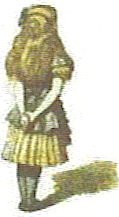True creativity often starts where language ends-Arthur Koestler
If such a image is recognized in how we attain such clarity, then would such a map be insignificant? What was conducive to the event happening? Fishing the deep waters of our subconcious purposely or with no cause other then to resolve a problem?
As subjective as the topic of intuition might be in regards to each others abilities, I see no reason why such a process should not be explained. People with good science abilities recognize that this process is a valid one regardless of the leanings towards atheistic, or godliness in bias, that I think appropriate that it is taken out of the subjective realm and mysticism? That any good luck, might wane, if all of a sudden talked about.
Clifford:
His was the best single sentence summing up the concept, as we were to use it that evening: Intuition is the process of getting to a destination without knowing the route. He also added: Sometimes you did not even know you wanted to get there. I've modified the words a bit, but that's the essence of what he said. It was a definition that was so appreciated, you could hear several audible hhhhmmmmms of recognition from the audience.
There is a quiet recognition here, of something that touches us all, and trying to explain it does not seem like a inappropriate thing to do. Thus I would try and model a approach no different then the mathematician or scientist who is at a lost for words/math. Thus, Arthur’s quote up top makes some kind of sense.
Now sure the ingenuity of the moment might seem far and in between, but being aware of the day today circumstances in our memories induced created, is a good way of watching how this process might unfold. That they might only be one time of significance, would not dissaude me from stating that it is more likely encounter more then one might think. An example multiplied by the number of people who say ah, yes I see, and we understand that the point about it’s significance, that we are in agreement. Is there some other explanantion, the more the merrier, that we might see the greater detail?
This intuitive process is as applicable to our search for wordings, as it is for science/math.
Where is the most apropriate place for such recognitions, as to when the work ends, and we are at a loss?
A Supersymmetrical idea perhaps, or a potential resource seen in analogy like water, of the subconscious/unconscious? Would we be wise to know when such things are sent to the subconscious, that by such continued recourse in the sameness of experience, such things will arise to the surface time and time again.
Has this emotive experience changed, or, can we assign new attitudes to what we always did uncosciously? By being aware in our daily lives, the forces of violent seas or a messy house in symbolic analogy will we have recognized the warnings from a disorganized mind, or one, that has not paid attention to the experience manifested?


